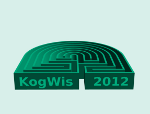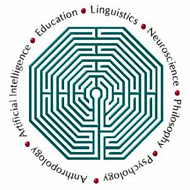Tutorials
For capacity planning, please register for the tutorials (without additional fee) until September 14:
- Cognitive Modeling with ACT-R
- Human-Computer Interaction: Concepts, Methods, Tools
- Modeling Motivational Dynamics with Psi/MicroPsi
Cognitive Modeling with ACT-R (Mo, 11:00-15:00, M3/00.16)
Marco Ragni and Rebecca Albrecht, Universität Freiburg
registerInhalt
Kognitive Modellierung ist die Algorithmisierung psychologischer Theorien. Das Ziel ist es, neben der Identifikation von Widersprüchen in psychologischen Theorien, ein algorithmisches und zugleich psychologisch fundiertes Erklärungsmodell zu entwickeln, welches die präzise Reproduktion empirischer Ergebnisse (Reaktionszeiten und Fehlerraten) und auch die Vorhersage aufgabenspezifischer Gehirnaktivationen (aus fMRT-Untersuchungen) gestattet. In diesem Tutorial wird dabei die kognitive Architektur ACT-R (Anderson et al., 2004; Anderson, 2007) vorgestellt. ACT-R ist ein Produktionsregelsystem und zugleich eine hybride Theorie (mit symbolischen und subsymbolischen Elementen) menschlicher Kognition. Die Architektur umfasst eine Reihe von Grundannahmen, die es erlauben kognitive Phänomene verschiedener Bereiche zu modellieren. Die einzelnen Elemente (sogenannte Module) sind dabei psychologisch fundiert und schränken zugleich mögliche kognitive Modelle sinnvoll ein. Anwendungen reichen dabei von kognitionspsychologischen Modellen des Lernens und Gedächtnisses, des Problemlösens, der Wahrnehmung, der Aufmerksamkeitssteuerung, bis hin zur Mensch-Computer-Interaktion (HCI).
Anderson, J. R., Bothell, D., Byrne, M. D., Douglass, S., Lebiere, C., & Qin, Y. (2004).
An integrated theory of the mind. Psychological Review, 111, 1036-1060.
Anderson, J. R. (2007). How can the human mind occur in the physical universe?
New York: Oxford University Press.
Teilnehmer
Dieses Tutorial ist für maximal 30 Teilnehmer ausgelegt. Die Teilnehmer sollten einen Laptop zur Veranstaltung mitbringen
Human-Computer Interaction: Concepts, Methods, Tools (Mo, 11:00-15:00, M3/01.16)
Tom Gross & Christoph Beckmann, Universität Bamberg
registerAim
The aim of this tutorial is to present basic concepts and paradigms of Human-Computer Intearction (HCI) as well as its design principles and prototypes. The primary focus is on concepts, methods, and tools for the design, the implementation, and the evaluation of interactive systems.Contents
In particular the following areas are covered: introduction and basic concepts; human factors and technological factors; interaction, design, and prototyping; as well as evaluation and usabililty. In evaluation and usability participants will get hands-on experience to empirical methods and eyetracking.Participation
This tutorial is of interest to people from academia and industry, and beginners and experts from other fields likewise. The tutorial is limited to 20 participants.Instructors
Dr. Tom Gross is full professor and chair of Human-Computer Interaction at the Faculty of Information Systems and Applied Computer Science of the University of Bamberg, Germany. He also heads the Cooperative Media Lab. Christoph Beckmann is a senior researcher in the group. Further information on the research and teaching of the instructors can be found at: http://cmlab.de/.Modeling Motivational Dynamics with Psi/MicroPsi (Mo, 13:30-16:30, M3N/01.26)
Joscha Bach (HU Berlin) & Dietrich Dörner (Universität Bamberg)
registerContents
The Psi theory (Dörner 1999, Dörner et al. 2002) contributes to a general understanding of the principles of cognition. Specifically, it explains how a finite set of physiological, social and cognitive demands can be functionally specified and lead to the observable heterogeneity and dynamism that characterizes human intentions, goals and decision making. It details the emergence of affective states and emotion, and their integration into perceptual, anticipatory, reflective, deliberative processes and so on.
Thereby, the Psi theory defines constraints and principles for a cognitive architecture with respect to motivational control, affective modulation, perception, mental representation and general organizational principles. MicroPsi (Bach 2009) is an implementation of the Psi theory as an AI architecture. It offers of a simulator for spreading activation networks that represent semantic content and are grounded in sensory input and actuator output. MicroPsi agents are situated in dynamic simulation environments and implement a motivational system with a set of physiological, social and cognitive drives, and have been applied for experiments in affective computing, categorization and multi-agent interaction.
The tutorial will give an overview over the general principles and core assumptions of the Psi theory, and introduce our implementation approaches, which can either be directly used, or adapted for other computational models of autonomous behavior, affective modulation and grounded representation.
Dörner, D. (1999). Bauplan für eine Seele. Reinbeck: Rowohlt
Dörner, D., Bartl, C., Detje, F., Gerdes, J., Halcour, (2002). Die Mechanik des Seelenwagens. Handlungsregulation. Verlag Hans Huber, Bern
Bach, J. (2009). Principles of Synthetic Intelligence. Psi, an architecture of motivated cognition. Oxford University Press.







